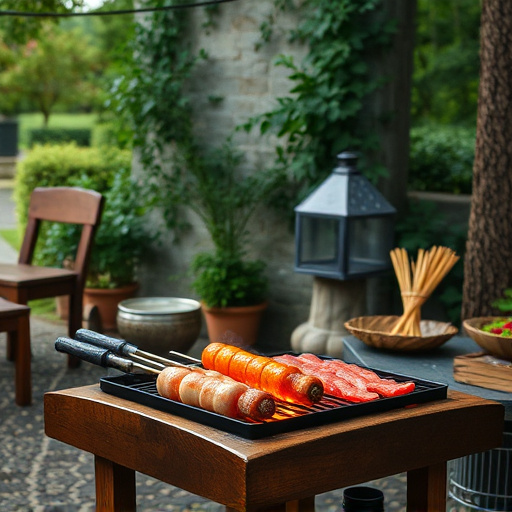Choosing the right ribs is crucial for a successful BBQ recipe. Look for thick, meaty pork ribs with good fat marbling, and consider types like baby back, spare ribs, or St. Louis-style, each with unique traits. Trim excess fat and membrane, score the meat, rinse, and dry before cooking to achieve tender, flavorful results in your BBQ dish.
Unleash the ultimate BBQ delight with these slow-cooked, sweet glaze ribs – a masterclass in comfort food. This comprehensive guide takes you on a journey from choosing the perfect ribs (baby back, spareribs, St. Louis-style) to mastering the art of low and slow cooking for maximum tenderness. Learn to craft a delectable sweet glaze that balances sweet and savory, and discover creative serving suggestions, from classic sides to unique presentations, ensuring your rib recipe is a true crowd-pleaser.
- Choosing the Right Ribs
- – Types of ribs: Baby back, spareribs, St. Louis-style
- – Selecting quality ribs: Freshness and marbling
- – Tips for trimming and preparing ribs
Choosing the Right Ribs
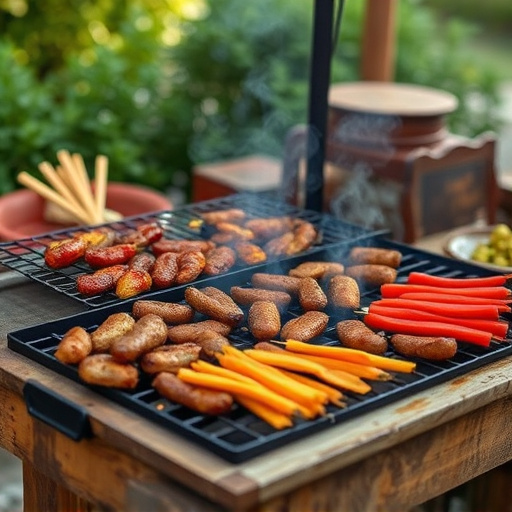
When it comes to crafting the perfect BBQ recipe for slow-cooked ribs with a sweet glaze, selecting the right ribs is a crucial first step. Opt for high-quality, meaty pork ribs that are at least 1/2 inch thick along the bone. Look for ribs with a good marbling of fat, as this adds flavor and moisture during the long, slow cooking process.
Consider the cut of the ribs as well; baby back ribs are a popular choice due to their smaller size and tender meat, while spare ribs offer a heartier, chewier texture that pairs well with robust glazes. Regardless of your preference, ensure your ribs are well-trimmed, allowing for easier glaze adhesion and a smoother cooking experience in your slow cooker or oven.
– Types of ribs: Baby back, spareribs, St. Louis-style
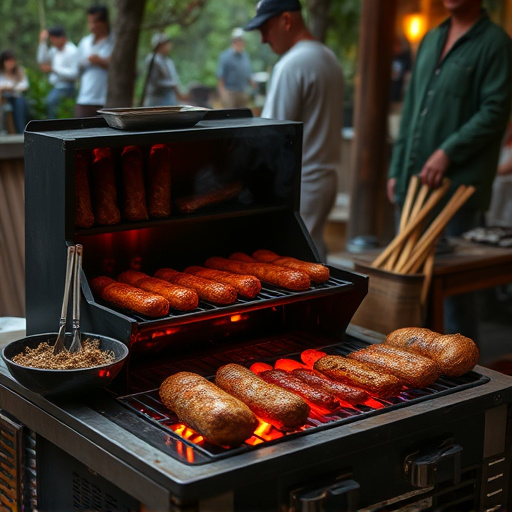
When it comes to ribs, there are three main types that BBQ enthusiasts love: baby back, spareribs, and St. Louis-style. Each has its unique shape, tenderness level, and cooking characteristics. Baby back ribs, for example, have a small bone attached at one end, making them easier to eat but requiring a bit more attention while slow cooking. Spareribs, on the other hand, are larger and meaty with multiple bones scattered across the rack, resulting in a heartier portion perfect for sharing. St. Louis-style ribs, also known as “cut in between” or “spit-cooked” ribs, have a distinct look with individual slabs cut between the bones, allowing for quicker cooking and easy serving.
Choosing the right type of ribs is essential when preparing this classic BBQ recipe. Baby back ribs are popular for their delicate flavor and ability to stay tender during slow cooking. Spareribs offer a richer taste and more substantial texture, making them ideal for larger gatherings. St. Louis-style ribs bring a unique presentation and quicker preparation time, ensuring your BBQ guests can enjoy every delicious bite.
– Selecting quality ribs: Freshness and marbling
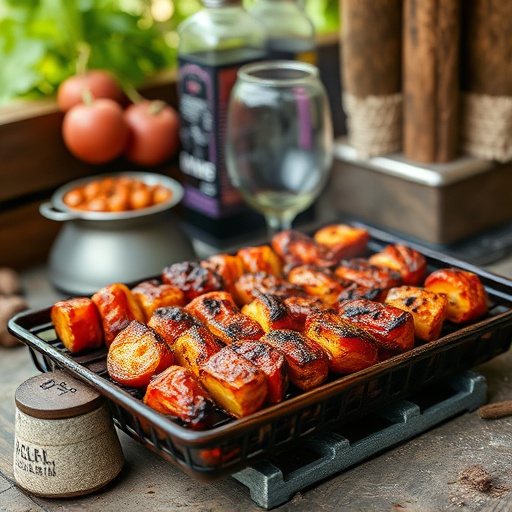
When it comes to crafting the perfect slow-cooked ribs with a sweet glaze, the first step begins with selecting quality ribs. Look for meaty cuts with visible marbling—the streaks of fat running through the meat—as this adds flavor and tenderness during the long, slow cooking process. Freshness is key; opt for ribs that are plump and firm, avoiding those that appear shriveled or dry. Consider rib cuts like baby back or spare ribs, known for their balanced meaty portions and ample marbling.
A quality BBQ recipe starts with these fundamentals. The right ribs set the stage for a mouthwatering glaze that melds sweet and savory flavors. Remember, taking time to source top-notch ingredients is half the battle won in achieving exceptional results—your taste buds will thank you!
– Tips for trimming and preparing ribs
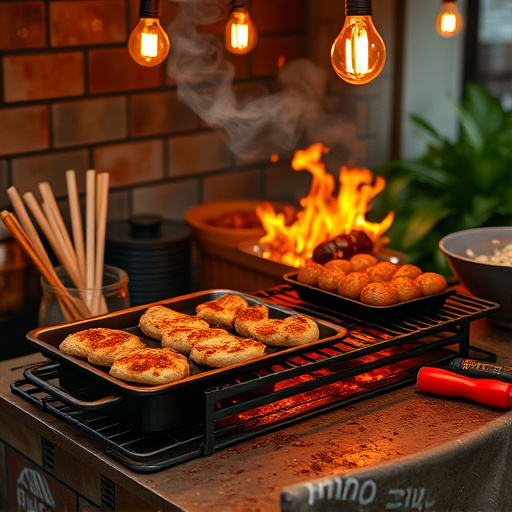
When preparing flavorful ribs for a mouthwatering BBQ recipe, trimming and properly preparing them is key to achieving tender, juicy results. Start by removing any excess fat or membrane from the bone side of the ribs. This not only improves the overall taste but also ensures even cooking. Use a sharp knife or a specialized rib trimmer to carefully scrape away any unwanted bits.
Next, consider scoring the meat on the bone side in a crisscross pattern. This technique helps render the fat during slow cooking, enhancing both flavor and tenderness. After trimming, give your ribs a good rinse under cold water and pat them dry with paper towels before proceeding to the next step of your BBQ recipe preparation.
